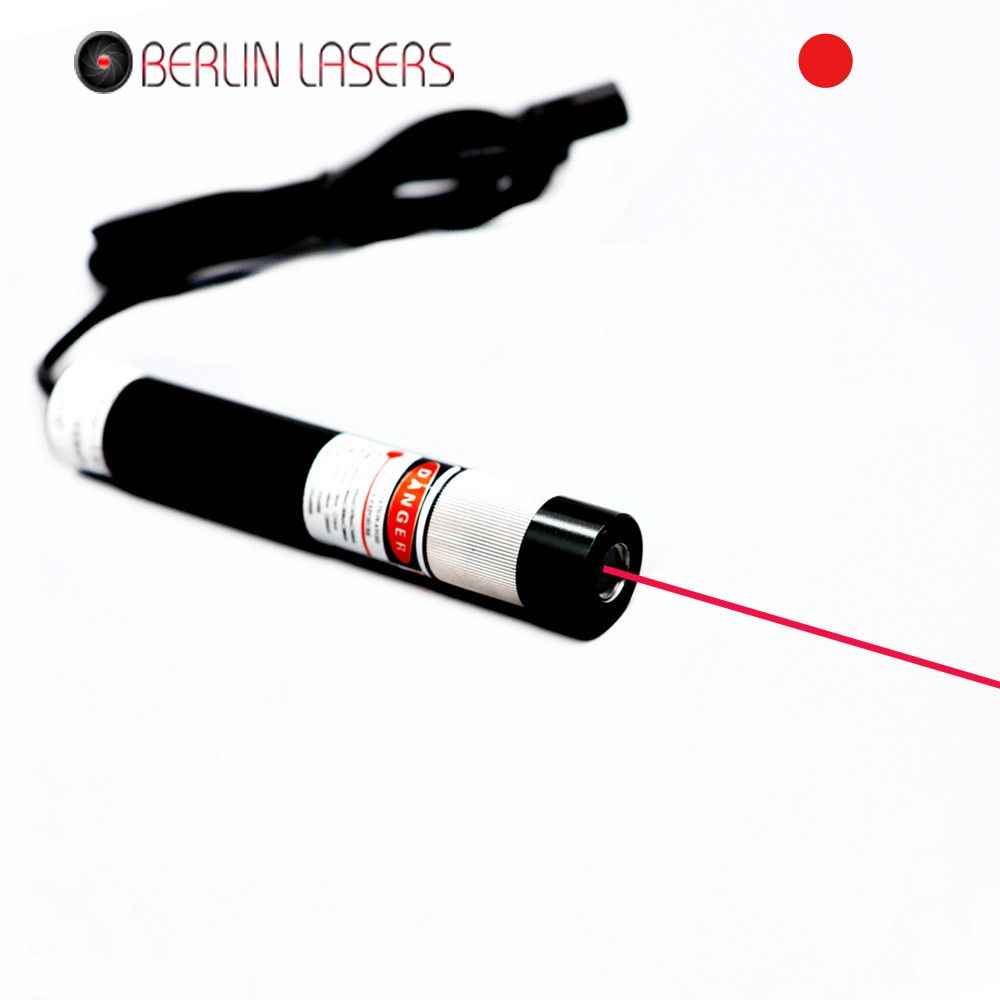
Among all visible optical spectrum, red laser diode module with wavelength of 680nm is in the red light region, which has a good excitation effect on some specific fluorescent substances, and good penetration in biological tissues. It is suitable for some deep tissue imaging studies in the biomedical field. In practical precise dot measuring works, it can provide high density red laser light of a single wavelength, which can reduce spectral interference, make experimental results more accurate and clear, and is conducive to the study of the interaction between light of a specific wavelength and matter.
In practical precise dot measuring works, owing to the easy use of an AC/DC adapter, this 680nm red laser diode module is able to work with continuous red laser beam emission from an import 680nm red laser diode within wide range output power of 5mW to 100mW. Configured with a metal heat sink cooling system inside a 16mm or 26mm diameter anodized aluminum alloy housing tube, it enables stable and ultra clear red reference dot projection for a quite long time. In addition, when 680nm red dot laser is used in different working environments, including wide range operating temperature, different humidity, or mechanical moving or calibration, it still maintains ultra clear and no decay light red dot alignment for multiple application fields.
Being made with a qualified glass coated lens in front of beam aperture, this single wavelength 680nm red laser diode module enables high transmittance red laser light emission and ultra clear red dot indication. The strong coherence of the laser enables it to produce stable and obvious interference and diffraction phenomena in interference, diffraction and other experiments, which is convenient for accurate measurement and analysis. Even in experiments of weak signal detection, highly bright red dot laser can provide sufficient light intensity to ensure the observability and accuracy of the experiment.
Application introduction:
Optical experiments: In light interference and diffraction experiments, as an ideal coherent light source, 680nm red laser diode module helps researchers observe and analyze the wave nature of light. For example, in double-slit interference experiment, the laser emitted by the 680nm red dot laser module can produce clear and stable interference fringes, which is convenient for measuring and studying the wavelength and other characteristics of light.
Spectral analysis: As an excitation light source, it is used to excite samples to produce fluorescence or Raman scattering, and to study the molecular structure and chemical composition of samples by analyzing the spectrum of scattered light. In materials science research, it can be used to analyze the crystal structure, chemical bonds, etc. of materials.
Biomedical research: In cell imaging and biomolecule labeling, the wavelength of 680nm red laser diode module can excite specific fluorescent markers, allowing researchers to observe the structure inside cells and the distribution of biomolecules. For example, in fluorescence microscopy, 680nm lasers can be used to excite red fluorescent proteins to locate and track specific proteins in cells.
